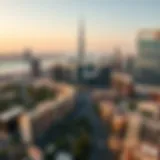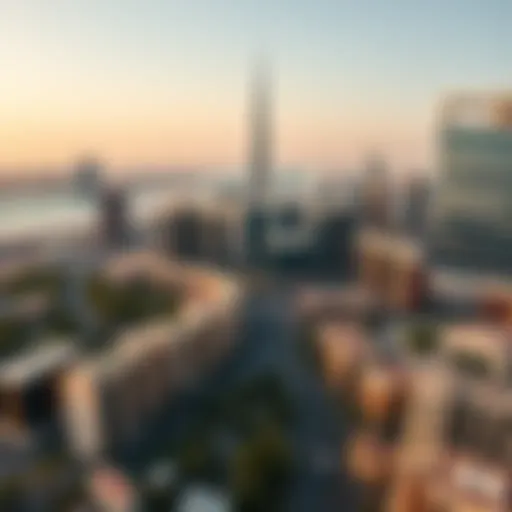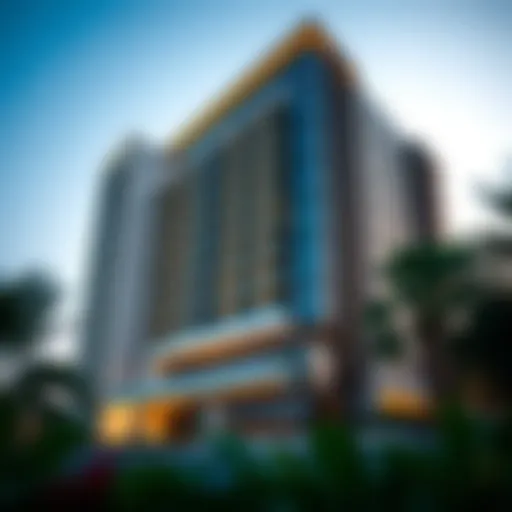Exploring RAK Building: Architecture in Dubai's Market
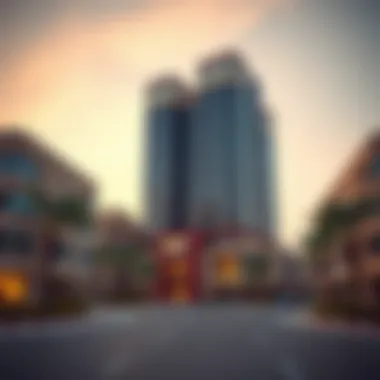
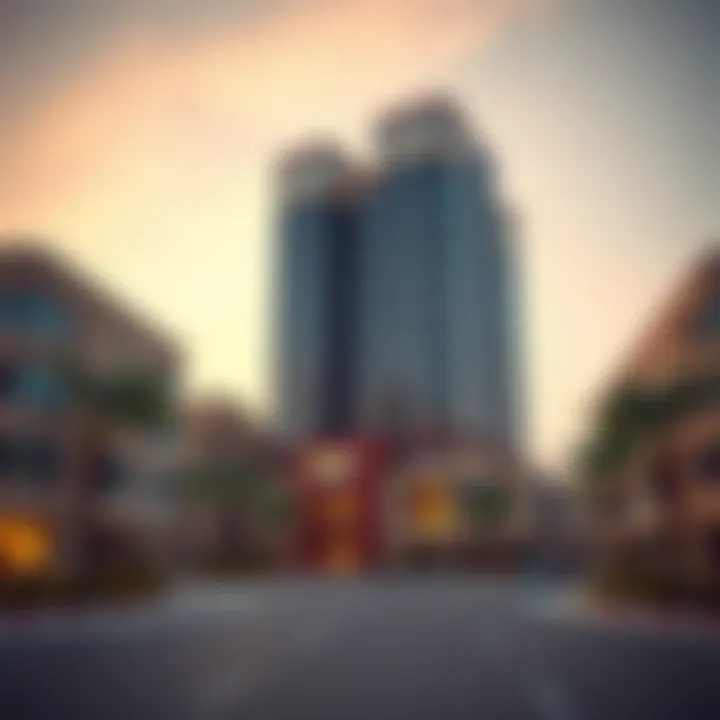
Intro
As the skyline of Dubai continues to ascend, revealing majestic structures that speak to both artistry and functionality, the idea of RAK building emerges as a significant player in the realm of architecture and development within the city. With historical roots and a synthesis of modern innovations, RAK building presents an incredible opportunity for investors, architects, and urban planners. This style is not just about aesthetics; it also encapsulates the core principles of sustainable development and effective space utilization. Understanding RAK building leads us to appreciate how these architectural techniques weave into the broader fabric of Dubai's thriving real estate landscape.
In this article, we shall dissect the manifold elements of RAK building, from its noteworthy historical influences to the principles steering its modern-day applications. We'll take a closer look at the regulatory frameworks that shape this niche of construction and the multitude of challenges currently facing the industry. By the end, readers should feel equipped with a comprehensive understanding of RAK building and be well-prepared to engage with its implications in Dubai's expansive real estate market.
Market Insights
Current Trends in Dubai Real Estate
Dubai's real estate market is a whirlwind of activity, consistently drawing attention from both local and international investors. A notable trend is the increasing integration of technology in construction practices, aligning with global pushes for smart city initiatives. The rise of eco-friendly building materials has also gained traction, as developers seek to minimize carbon footprints while maximizing space efficiency.
Another key trend is the growing interest in off-plan properties. Many buyers see these investments as an opportunity to acquire real estate at lower prices, before the final product hits the market. This practice has contributed significantly to the dynamism of the market, enabling both established developers and new players to launch innovative projects that stand out.
Market Forecast and Predictions
Looking ahead, analysts anticipate a steady rise in property values, particularly for developments utilizing RAK building techniques. The unique attributes associated with this approach are likely to capture the interest of buyers seeking both aesthetic value and practicality. Infrastructure improvements, such as the expansion of public transport networks, are expected to further boost accessibility to various districts within Dubai, making properties in those areas even more desirable.
Considerable investments into infrastructure are projected to substantially enhance Dubai’s appeal as a leading global real estate market.
The shift toward sustainable practices also hints at a market pivot, with more buyers looking for properties that align with environmental consciousness. As a result, it’s likely that RAK building will increasingly gain prominence, promoting developments that utilize local materials and traditional architectural wisdom while adapting to modern needs.
Buying and Selling Guide
Steps to Purchase Property in Dubai
Navigating the property market in a vibrant city like Dubai requires knowledge and preparation. For potential buyers, here are some essential steps:
- Research: Understand the market trends. Investigate different neighbourhoods to find one that fits your lifestyle and budget.
- Financing Options: Assess your financial status and explore mortgage options. Banks and financial institutions can offer insights into what might work for your specific circumstances.
- Legal Requirements: Familiarize yourself with the legalities of property acquisition in Dubai. This may include obtaining approvals from relevant authorities.
- Property Viewing: Visit properties of interest. Always take time to see things in person to ascertain condition, location, and amenities.
- Making an Offer: When you're ready, make a calculated offer based on your research and property evaluations.
- Agreement and Closing: Once your offer is accepted, work through the legal paperwork to finalize the sale.
Essential Tips for Sellers
Sellers need to approach the market with a strategy in mind as well. Here are some handy tips to consider:
- Pricing Correctly: Set a price that reflects the current market conditions. Overpricing can deter potential buyers, while underpricing might lead to significant losses.
- Effective Marketing: Utilize attractive visuals and pertinent details in your listings. Highlight the benefits of RAK building techniques, if applicable, as they can attract buyers keen on modern constructions.
- Open House Events: Organizing viewings can allow potential buyers to experience the property firsthand, speeding up the selling process.
- Negotiation Skills: Be ready to negotiate. Understanding buyer motivations can help reach an agreeable price.
Prolusion to RAK Building
The concept of RAK building encompasses a unique architectural style that has made its mark on Dubai's growing skyline. Understanding RAK building is essential for anyone interested in the intricate layers of Dubai's booming real estate sector. This section aims to provide an overview of the key attributes that define RAK building, including its historical roots, architectural features, and significance in contemporary construction practices. By dissecting this topic, one gains a thorough understanding of how RAK building fits into the broader narrative of urban development in Dubai.
Definition of RAK Building
RAK building refers specifically to a construction approach that blends traditional and modern architecture, heavily influenced by the Emirati culture. Originating in Ras Al Khaimah, a notable emirate in the UAE, RAK building incorporates regional materials and techniques with innovative design concepts. Without a doubt, RAK buildings often utilize locally sourced materials like limestone and clay bricks, allowing them to seamlessly merge with the surrounding landscape.
In practice, RAK building typically features open layouts and intricate facades that showcase both aesthetic and functional elements. The roofs often adopt flat or slightly sloped designs, which is a common characteristic in Middle Eastern structures, making them suitable for the hot climate yet maintaining structural integrity. One could say that RAK building stands at the crossroads of tradition and modernity, embodying the evolving identity of Dubai itself.
Significance in Dubai's Real Estate Market
The significance of RAK building in Dubai’s real estate arena cannot be understated. As the real estate market in Dubai continues to thrive, the demand for distinct architectural styles rises. RAK buildings, with their unique designs, contribute not only to the emirate’s aesthetic appeal but also its investment potential. One might argue that these buildings represent a thoughtful combination of cultural authenticity and contemporary trends, which appeals to both investors and homebuyers.
Several factors underscore the importance of RAK building:
- Cultural Connotation: By incorporating local heritage into modern designs, RAK buildings resonate with residents and visitors alike, enhancing community pride.
- Investment Opportunities: With the potential for high rental yields and property appreciation, investors see RAK buildings as a smart move.
- Urban Planning Integration: As part of a broader urban development strategy, RAK buildings align with Dubai’s vision for sustainable and innovative architectural growth.
As Dubai forges ahead into a new era of urban expansion, RAK building holds a pivotal role in shaping its future. It reflects not just the architectural preferences of a populace but also a deep-rooted connection to the region's history and culture, embodying the dynamic spirit of this remarkable city.
"RAK buildings are not just structures; they are a testament to a rich cultural legacy fused with modern architectural brilliance."
This connection between past and present emphasizes why understanding RAK building is crucial for anyone involved in the Dubai real estate market.
Historical Context of RAK Building
The significance of understanding the historical context of RAK building cannot be underscored enough. It is the thread that ties together architectural evolution with cultural narratives, outlining how both past and present shaped the vibrant architecture we see today in Dubai. The progression from traditional to contemporary building practices is not merely a chronology; it offers insights into the socio-economic climate of the region, showcasing adaptive strategies responding to local needs and international influences.
Evolution of Architectural Techniques
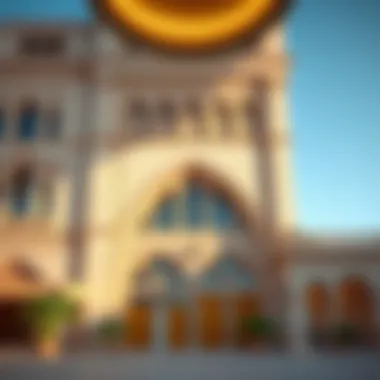
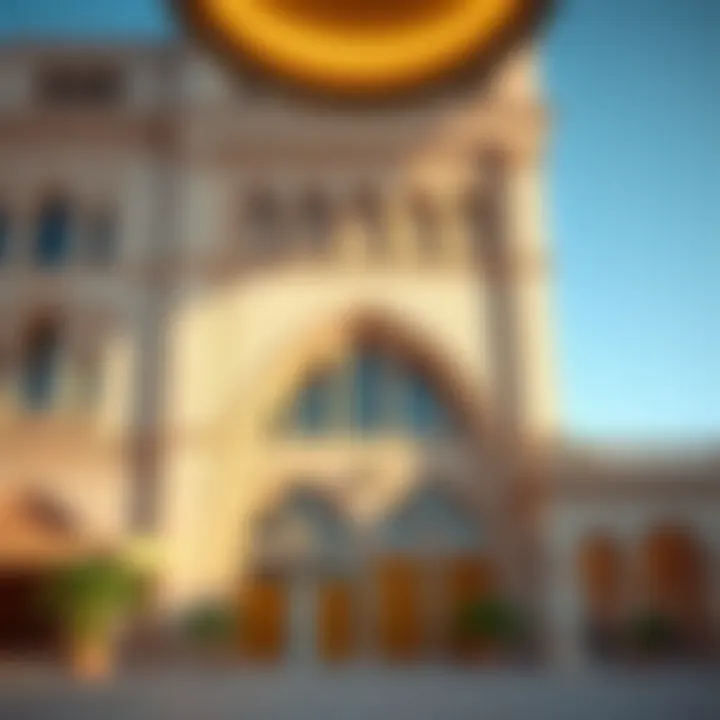
The journey of RAK building techniques has seen substantial transformations over the decades. Initially characterized by simple masonry and local materials, the architectural style evolved as economic conditions and technological advancements came into play. Early structures often utilized coral stone and mud bricks, materials easily sourced from the surrounding environment. This not only showcased the craftsmanship of local builders but also ensured that the designs were in harmony with their climate.
As Dubai began its transformation during the 20th century, the incorporation of advanced building materials like concrete and glass became prevalent. These materials offered durability, aesthetic appeal, and resistance against harsh weather.
For instance, the shift from using traditional stucco finishes to modern architectural designs can be observed in buildings like RAK Tower. This building exemplifies the embrace of contemporary techniques while still respecting the local heritage through its unique ornamentation.
Moreover, the advent of computer-aided design (CAD) has revolutionized how architects conceptualize and execute projects in RAK. Not only has this technology allowed for more intricate designs, but it has also hastened construction timelines and improved overall accuracy. Architects now blend functionality with artistry, ensuring structures are not mere shelters but also landmarks that reflect a narrative of the times.
Cultural Influences on Design
Cultural influences breathe life into RAK buildings, infusing them with character and identity. Dubai itself is a melting pot of cultures, and this diversity is reflected in its architectural landscape. The fusion of Islamic architectural principles with modern aesthetics is a hallmark of RAK building design.
For example, the intricate lattice work and geometric patterns found in traditional Islamic architecture often inspire contemporary designs. These motifs not only serve an aesthetic purpose but also create shade, thus improving energy efficiency in a region known for its blazing heat. The incorporation of Mashrabiya, a traditional architectural element, serves as another example where cultural heritage meets practical function. It allows for ventilation while offering privacy and enhancing the beauty of building facades.
The integration of green spaces and communal areas within developments is also influenced by cultural attitudes towards family and community life prevalent in Emirati society. These spaces foster social interactions and a sense of belonging, essential elements for community cohesion.
"RAK buildings aren't just constructions; they're storytellers, narrating the evolution of a society that thrives on its traditions while embracing the future."
As we look back on the historical context of RAK building, it becomes clear that this narrative is one of resilience and adaptability. The architectural styles evolve, reflecting broader cultural shifts while remaining grounded in local heritage. The importance of understanding this historical framework cannot be overstated, as it lays the groundwork for appreciating the future trajectory of RAK building.
This narrative, identifying and analyzing the interplay between history, culture, and architectural technique, emphasizes the profound role that architecture plays in shaping society. To further enrich your understanding, visit Wikipedia or Britannica for comprehensive insights.
Architectural Elements of RAK Building
The architectural elements of RAK building play a vital role in shaping the identity and functionality of structures within Dubai’s vibrant skyline. These elements are not just about aesthetics; they embody the ingenuity and adaptability required to thrive in a rapidly evolving environment. Understanding these components provides investors and developers with insights that can lead to more informed decisions and innovative designs.
Materials Commonly Used
When it comes to materials, RAK building doesn’t skimp. Traditionally, you’d find sand, stone, and concrete, each contributing to durability and warmth in design. These materials are often sourced locally, reducing transportation costs and supporting the community economy. More recently, sustainable options like recycled steel and environmentally-friendly concrete have gained traction, reflecting a global trend towards greener construction.
Using materials like bamboo also brings a unique flair. Not only is it environmentally sustainable, but it also adds a distinct aesthetic quality that sets a project apart in the competitive Dubai market. An array of textures and finishes can be used to create depth in design—think of rough stone facades paired with smooth glass—boosting the overall appeal of the structures.
Structural Design Features
Structural design is where the rubber meets the road. The innovative designs found in RAK buildings typically incorporate open floor plans, maximizing natural light and ventilation throughout. This isn’t just for show; it also significantly enhances the livability of commercial and residential spaces. Multi-tiered layouts and the strategic placement of outdoor areas create a feeling of openness and connectivity—a sought-after quality by many homebuyers and tenants.
Then there’s the importance of seismic resistance. With potential earthquake risks, buildings in RAK must be designed to withstand these forces, often employing advanced engineering techniques. Designs that allow for flexibility in frames, along with foundation systems that absorb energy, contribute to structures that can stand the test of time.
Environmental Considerations
The environmental impact of RAK buildings cannot be overlooked. Incorporating solar panels not only reduces electricity costs but also aligns with global sustainability goals. Green roofs are becoming increasingly popular; they not only improve insulation but also manage rainwater effectively, reducing flooding risk in urban areas.
Water conservation techniques, such as rainwater harvesting and efficient irrigation systems, add to the overall sustainability of a building. The nature of construction materials also matters; for example, using materials with lower carbon footprints supports a healthier environment.
"Every building project is a chance to contribute positively to the surrounding ecosystem."
To sum it up, the architectural elements of RAK building reflect not only a commitment to aesthetic excellence but also a deepening relationship between construction practices and environmental stewardship. In a city that is rapidly growing, these elements are pivotal to future developments, ensuring they are relevant and resonant within Dubai's urban landscape.
For more information on building materials and sustainable architecture, visit Wikipedia and Britannica.
Investors and developers should consider these architectural elements carefully as they embark on their next projects. With a focus on materials, structural integrity, and environmental impact, they are well on their way to making a long-lasting impression on Dubai's landscape.
Regulatory Framework Surrounding RAK Building
The regulatory framework surrounding RAK building plays a significant role in safeguarding the integrity and future prosperity of Dubai's real estate sector. It provides a structure for developers, investors, and builders to operate within, ensuring that construction practices meet safety, environmental, and aesthetic standards. Understanding these regulations is crucial for all stakeholders in the industry.
Building Codes and Standards
Building codes are essentially the rules that dictate the standards for constructed objects such as buildings and non-building structures. When it comes to RAK construction, these codes dictate everything from the materials used to the design specifications required to ensure safety and functionality. Some of the key aspects of these codes include:
- Safety Requirements: Building codes prioritize occupant safety ensuring that structures can withstand earthquakes, wind, and potential fire hazards.
- Sustainability Guidelines: As environmental issues come more to the forefront, many building codes are evolving. They now include requirements for energy efficiency, waste management, and the sustainable use of materials.
- Aesthetic Regulations: In order to preserve the unique skyline and character of Dubai, certain standards also regulate the height, style, and appearance of buildings. This is a move to maintain both cultural heritage and modern progress.
It is crucial for developers to familiarize themselves with these regulations early in the planning phase. Aligning with these standards not only avoids potential legal troubles but can also enhance a building's market value and attractiveness to buyers.
Permitting Processes
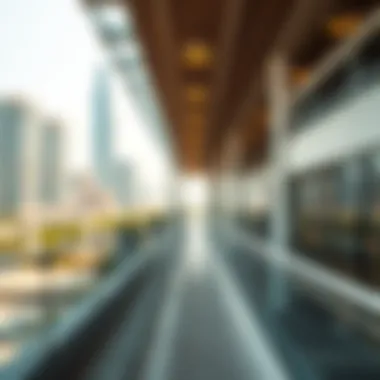
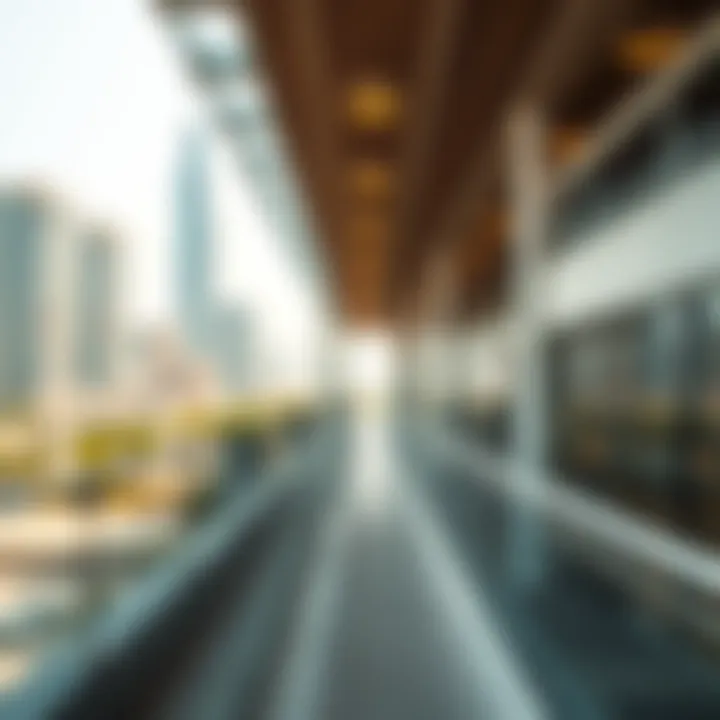
Navigating the permitting processes can often feel like a labyrinth to developers and investors alike. While necessary for ensuring compliance with local regulations, the steps involved can be both intricate and time-consuming. Here are some key components of the permitting landscape for RAK building:
- Initial Application: Developers must submit designs and plans to the relevant authorities. This stage often requires thorough documentation to demonstrate that the proposed project meets local regulations and standards.
- Review and Approval: After submission, there typically is a review period during which various governmental departments assess the project against building codes and zoning laws. This can include feedback from environmental agencies, fire brigades, and public health officials.
- Inspections: Once construction begins, multiple inspections will occur. Inspectors check compliance with approved plans and building safety codes during various stages of the construction process.
Understanding this permitting framework is invaluable. Each step not only represents mandatory legal checks but also acts as an opportunity to ensure that the project remains aligned with broader urban development goals.
"Navigating the regulatory landscape may seem daunting but it's the backbone of sustainable development. When followed correctly, it protects investments and assures quality assurance."
By embracing these regulatory frameworks, stakeholders can ensure their projects meet safety, sustainability, and aesthetic standards, while also contributing positively to the urban landscape of Dubai.
Contemporary Challenges in RAK Building
When we discuss the journey of RAK building, we cannot overlook the hurdles that architects and developers face in today's fast-paced environment. The contemporary challenges in RAK building are not just mere obstacles; they also present opportunities for innovation and growth. Understanding these challenges is essential for stakeholders involved in the real estate market, as it helps them navigate the intricacies of construction and urban development in a city as dynamic as Dubai.
Financial Constraints
In recent times, financial constraints have emerged as a significant challenge in RAK building. The phenomenon of fluctuating interest rates and the availability of funding play a pivotal role in dictating the pace of construction. Many developers, especially those tackling ambitious projects, find themselves walking a tightrope between budgeting and maintaining quality. As costs for materials and labor continue to rise, sticking to financial plans has become an uphill task.
Additionally, the influx of foreign investment can present both opportunities and difficulties. While foreign capital helps bolster development, navigating the bureaucratic red tape surrounding financial deals can be quite a cumbersome process. Investors often weigh the risks and returns carefully. Without an adequate risk management strategy, the project may falter before it starts, making financial planning not just a matter of balance sheets, but of strategic foresight.
"In today's economy, managing finances effectively in RAK building can determine the success or failure of a project."
Technological Barriers
Despite the rapid growth of technological advancements, RAK building still faces some barriers when it comes to implementing these innovations on the ground. The construction industry is slowly adapting to the digital revolution—tools like Building Information Modeling (BIM) and drones are gradually becoming common practices, yet many developers still lag behind. The reluctance to embrace these technologies can stem from several factors, including skills shortages, the costs for new equipment, and a general resistance to change.
One glaring issue is the interoperability of different technologies. For instance, if a contractor employs outdated software that doesn’t easily integrate with the latest design tools, it creates gaps in communication, leading to delays and potential errors in construction. Addressing these issues often requires substantial investment in training and resources. Developers must ask themselves: Are we ready to tackle the tech gap, or will we let it hinder our growth?
Sustainability Issues
With the global push towards sustainable development, RAK building cannot afford to miss that boat. Yet, incorporating sustainability into building practices is riddled with challenges. Understanding local climatic conditions and adhering to sustainability standards, while also meeting budget constraints, requires a balancing act. Materials and methods that align with eco-friendly standards can sometimes be more expensive upfront, making it tempting to choose cheaper, less sustainable options.
Moreover, the need for regulatory compliance looms over the industry. For builders, ensuring that structures meet environmental guidelines can add layers of complexity to planning and execution. Educating stakeholders about the importance of sustainability is essential. It's not just about building structures; it's about building a future that respects both the community and the environment.
Role of RAK Building in Urban Development
The role of RAK building in urban development is becoming increasingly crucial as the dynamics of urbanization evolve, particularly in a bustling metropolis like Dubai. This approach to construction not only shapes the physical landscape but also impacts social fabric and economic growth within the community. Understanding this role helps investors and urban planners navigate the complexities of real estate market trends and community needs.
Integration with Urban Planning
RAK building techniques align seamlessly with modern urban planning philosophies, focusing on sustainable growth and responsiveness to the community's needs. These techniques facilitate flexible layouts that can adapt to population changes, allowing for mixed-use developments that serve various functions, from residential to commercial spaces.
Consider the integration of open spaces within high-density apartments, which encourages social interaction among residents. This is a prime example of how careful planning can enhance livability. The RAK approach lends itself well to fostering green spaces, a vital aspect of urban development that not only beautifies a neighborhood but also contributes positively to the environment.
Moreover, technology plays a role. Innovative design software enables architects to optimize designs efficiently, ensuring that buildings occupy space effectively while adhering to zoning regulations. This synergy between RAK building and urban planning not only meets the physical demands of an expanding city but also anticipates future needs.
Impact on Community Development
RAK building's influence extends beyond mere structures; it reshapes the community ecosystem profoundly. When executed thoughtfully, RAK developments can stimulate local economies by attracting businesses which in turn creates jobs. For example, consider how a new residential complex can inspire entrepreneurs to open cafes, gyms, and retail outlets nearby, ultimately enhancing the community's liveliness.
Furthermore, community involvement in the development process is essential. Engaging locals during planning ensures that their needs and aspirations are heard. This collaboration leads to better-designed public spaces, fostering a sense of belonging among residents. A project that encourages local feedback not only enriches community ties but can also enhance property values by making neighborhoods more desirable.
"The built environment we create impacts not only our cities but shapes our lives and wellbeing."
As for the social aspect, developments that prioritize accessibility and inclusion significantly impact how diverse populations coexist. RAK building initiatives that include affordable housing options facilitate a mix of socio-economic backgrounds, enhancing community resilience and cohesion.
In addition to these benefits, RAK buildings often employ sustainable practices that further the community's well-being. Energy-efficient designs, waste reduction measures, and smart technologies contribute to a healthier living environment.
In summary, the integration of RAK building into urban planning is not just a technical necessity; it's a pivotal element that nurtures vibrant communities and propels economic growth, making it essential for stakeholders invested in Dubai's dynamic real estate landscape.
Keywords:
- RAK building
- Urban development
- Community development
- Urban planning
- Sustainable architecture
- Economic growth
- Mixed-use developments
For more insights on urban development practices, consider reaching out to Urban Design Institute and Sustainable Cities Network.
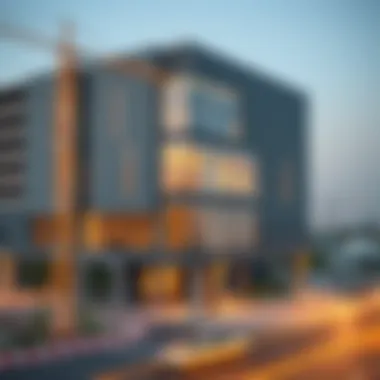
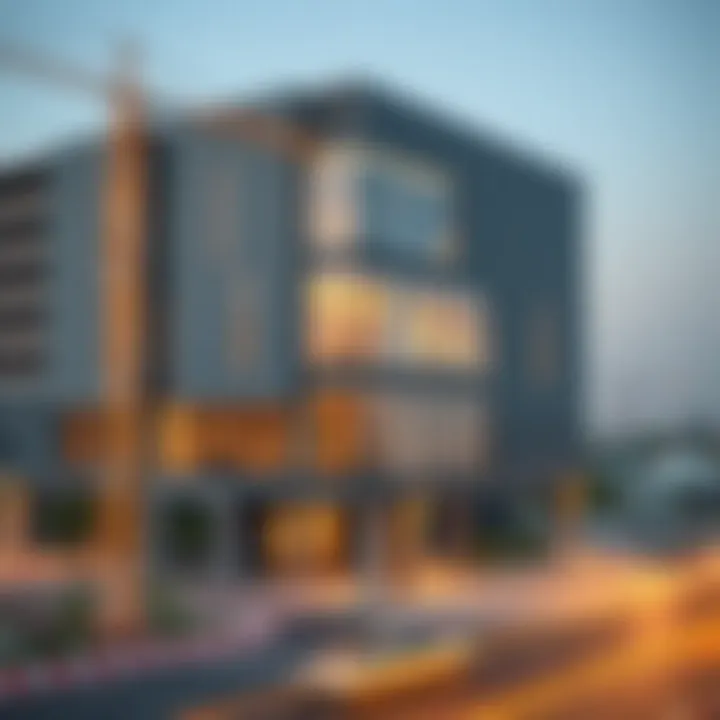
Explore further on these related topics through resources on Wikipedia and Britannica.
Case Studies of Successful RAK Buildings
The exploration of successful RAK buildings provides significant insight into the practical application of architectural principles within the bustling real estate market of Dubai. These case studies serve as a lens through which we can observe how RAK techniques not only impact the aesthetic and functional aspects of structures but also underscore the strategic decisions made by developers and urban planners. By examining specific projects, investors, homebuyers, and real estate professionals gain a better understanding of the nuances involved in RAK architecture, enriching their perspectives in a competitive market.
Prominent Examples in Dubai
Dubai is home to several landmark RAK buildings that showcase innovative design and construction practices. One particularly notable example is the RAK Tower. This high-rise is distinguished by its unique cylindrical shape and is known for incorporating sustainable building practices. It utilizes innovative energy efficiency systems, reducing operational costs while enhancing livability. The design was carefully crafted to allow for maximum natural light, showcasing both aesthetic appeal and practicality, which makes it attractive for both residential and commercial uses.
Another exemplary project is the Al Hamra Tower, heralded for its striking architecture. This skyscraper is a demonstration of modern engineering capabilities, with its sleek design cutting through the skyline. Not only does this building highlight the utility of RAK-style of construction, but it also embodies the rhythm of urban vibrancy, creating spaces that elevate the community’s social fabric.
Additionally, the Khalifa Business Park is a stellar example of RAK principles in action. Designed to blend with the natural surroundings, this development ensures sustainable growth while keeping the environment in focus. It includes green spaces and community areas, thereby promoting interaction among diverse groups. Furthermore, the architectural elegance combined with functional design can inspire future RAK projects aiming for both form and function.
Innovative Projects Outside Dubai
Going beyond the borders of Dubai, there are innovative RAK projects that are setting standards worldwide. For instance, the RAK City project in Ras Al Khaimah is paving the way for future developments with its focus on sustainability and smart city ideals. This initiative includes residential, commercial, and recreational spaces, fostering a thriving community atmosphere. The planning employs RAK architecture principles while emphasizing energy efficiency and environmental harmony, making it a noteworthy model for global urban development.
In Saudi Arabia, the King Abdullah Economic City can be highlighted for its incorporation of RAK techniques. It combines residential and commercial developments with essential infrastructure designed for sustainability. This city aims to reduce dependence on traditional energy sources by integrating renewable energy technologies, making it a prime example of how RAK principles can influence broader regional developments.
"Successful case studies not only illustrate design innovation but also emphasize efficient use of resources and environmental stewardship—the hallmarks of RAK building."
These case studies illustrate how RAK buildings not only contribute to the urban landscape but also serve as influential examples for future developers. By understanding these successful instances of RAK building, stakeholders can glean critical insights that can inform their own projects and strategies, propelling Dubai and surrounding areas toward sustainable urban growth.
Future Trends in RAK Building
As the pulse of Dubai's real estate market continues to quicken, the future of RAK building emerges on the horizon, beckoning with promises of innovation and adaptation. It's a fascinating territory where architecture and technology converge, and understanding these trends becomes crucial for investors, architects, and urban planners alike. As the construction industry evolves, so will the methodologies, aesthetics, and practices that define RAK buildings.
Among the most compelling aspects of this evolution are the emerging architectural styles, which reflect both local culture and global influences. Understanding what lies ahead can provide a roadmap for stakeholders to make informed decisions.
Emerging Architectural Styles
The architectural landscape is changing, with RAK buildings set to reflect a harmonious blend of tradition and innovation. Architects are taking cues from the rich cultural heritage of the United Arab Emirates while adopting modern design principles that cater to the demands of today’s market. Here are a few notable trends to keep in mind:
- Biophilic Design: There's a notable shift towards designs that emphasize connections to nature. Green walls, natural lighting, and terraced gardens will become staple features in new developments.
- Modular Construction: Prefab elements are gaining traction. This method not only reduces construction time but also minimizes waste, making it appealing for both developers and eco-conscious buyers.
- Sustainable Materials: As society becomes increasingly aware of climate change, there’s a push for using recycled and locally sourced materials. Designing buildings with longevity and low environmental impact in mind is paramount.
Architects are incorporating these styles by interweaving them with cutting-edge technology. This results in structures that are not only aesthetically pleasing but also functionally superior.
Technological Innovations Impacting RAK Building
The role of technology in the future of RAK building cannot be overstated. As we look ahead, several innovations stand to revolutionize the construction process and the final product:
- Building Information Modeling (BIM): This tech is reshaping the planning and construction stages. By utilizing 3D modeling, architects can predict issues before they arise, making construction more efficient and less costly.
- Smart Building Technologies: Increasing use of IoT (Internet of Things) is changing how buildings operate. Smart sensors can regulate heating, lighting, and security systems, creating environments that are both safe and energy-efficient.
- Advanced Robotics: Automation in construction will likely gain momentum, aiding in tasks like bricklaying and precise measurements, which can alleviate some of the labor-intensive processes.
In a nutshell, as the architectural and technological landscapes continue to intertwine, RAK building practices are poised to adapt in ways that enhance efficiency and sustainability.
"The architecture of tomorrow stands on the shoulders of today’s innovations. To ignore these trends is to risk obsolescence."
By keeping an eye on the emergence of these styles and technologies, stakeholders can ensure that their investments align with the future demands of the market. As RAK building moves forward, the integration of tradition with innovation will be key to crafting the Dubai skyline of tomorrow.
End: The Future of RAK Building in Dubai
The landscape of RAK building in Dubai is constantly changing, shaped by myriad factors that influence its future. In the context of a bustling real estate market, understanding the trajectory of this architectural style sheds light on broader trends impacting urban development in the region.
As sustainability becomes a priority for cities worldwide, RAK building techniques already emphasize efficiency and environmental sensitivity. This focus allows developers to not just meet regulatory frameworks but exceed expectations, setting a benchmark for future projects. Investors seeking properties that align with such forward-thinking methodologies are likely to find RAK developments particularly appealing, as they tend to have enduring value in the marketplace.
Community needs also play a significant role; developments must cater to the evolving requirements of residents. Whether it’s mixed-use spaces or community-centric projects, RAK building aims to support the social fabric of the area. Those designing RAK structures should remain attuned to local demands, ensuring a harmonious balance between innovation and tradition.
In summary, the future of RAK building in Dubai promises to embody resilience and adaptability.
“Buildings that do not just stand tall but also serve the community are the future.”
By breaking down barriers in traditional construction practices, the RAK approach fosters creativity that respects cultural heritage while integrating new technologies. Developers, financiers, and urban planners who recognize this potential will be at the forefront of Dubai’s ever-evolving real estate scene.
Key Takeaways
- Sustainability is Key: Future developments must be environmentally conscious, ensuring compliance with stringent regulations.
- Community-Centric Design: RAK buildings must meet the needs of residents, promoting social interaction and local engagement.
- Innovation in Techniques: Emphasis on modern materials and methods can elevate RAK buildings above competitors by ensuring longevity and aesthetic appeal.
Final Thoughts on Development Trends
As Dubai pushes forth in becoming a global hub, the RAK building typology stands to play a pivotal role. Investors and developers should closely monitor trends that emphasize sustainable practices, adaptability, and community integration.
Those who focus on incorporating innovative techniques into their RAK projects can better respond to market demands. This commitment to progress not only benefits individual investors but also contributes to the overall growth and vibrancy of Dubai's architectural landscape. Keeping an eye on technological advancements can guide future developments, ensuring that RAK building remains a vital part of Dubai's dynamic real estate tapestry.
